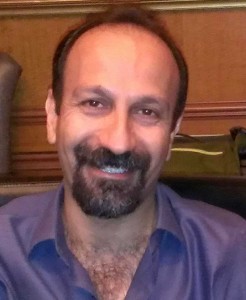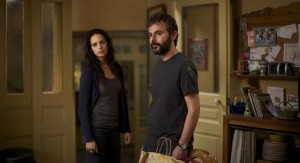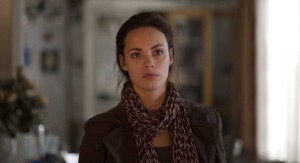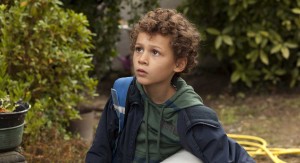![]()

Like his previous film, The Past is ultra-realistic in style – both movies were masterfully lensed by Iran’s leading cinematographer, Mahmoud Kalari. But beneath the surface naturalism there is an intricately constructed human puzzle which is not easy to solve.
“The Past is a continuation of A Separation, but it’s not a repetition,” said Farhadi, who was recently in Los Angeles promoting the movie. The Past is up for best foreign film at Sunday’s Golden Globes, and has already received numerous honors including the best actress award at last year’s Cannes Film Festival to female star Bérénice Béjo, who received a supporting actress Oscar nomination in 2012 for her non-speaking role as Peppy in The Artist. The film was also nominated for the Palm d’Or. Though it has also been named best foreign film by many critics’ groups in their recent year-end choices, The Past, somewhat surprisingly, did not make the short list of foreign films eligible to be nominated for the Oscar in that category.
Like A Separation, The Past depicts a group of emotionally interconnected individuals faced with conflicts, obligations and choices that clash without a clear resolution. Every character has his or her own say, leaving viewers to make their own judgments.

The plot of The Past involves a complex triangle. Ahmad, the husband of Marie (played by Béjo) who has left her in Paris with two children and gone back to Iran, returns at her request to finalize a divorce after a four-year separation. It turns out she wants to marry Samir, who has made her pregnant. He is also married but his wife, after a suicide attempt, is in a coma hovering between life and death.
For Farhadi, the film’s title is a reflection of its themes. “The past is like a shadow, behind us but attached to us,” he noted. “The film asks what should we do with our past? Should we turn back and look at it or should we forget it? Looking at the past can be very dangerous. At times when we think we’re walking forward into the future, we’re trying to escape the past.”
Such weighty abstractions are communicated in precise visual images that are cumulative in their impact. During the film’s titles, there is rain falling on a car windshield. “The past is sometimes something we would like to wipe clean,” he noted. A bit later, the car is put in reverse and has an accident. Another iteration later in the film is at a laundry. “They try to clean the clothes, but there are stains that cannot be removed, just as everybody’s goal is to clean their lives but there are stains that cannot be removed,” he added.
 In one scene a house is being painted, something that happens all the time. “But then you think why are they changing the color of the house – because they are taking something old and covering it with something new, which is close to the film’s concept,” he noted. “Such things are supposed to guide you to certain meanings, but they are not obvious at the time. And while the image is realistic and we think we’ve seen it a million times in real life, it’s actually highly constructed.”
In one scene a house is being painted, something that happens all the time. “But then you think why are they changing the color of the house – because they are taking something old and covering it with something new, which is close to the film’s concept,” he noted. “Such things are supposed to guide you to certain meanings, but they are not obvious at the time. And while the image is realistic and we think we’ve seen it a million times in real life, it’s actually highly constructed.”
Farhadi is known for such precision in almost every aspect of his filmmaking from writing the script, through lengthy rehearsals, to location and shot selections. The choice to shoot the movie in Paris was plot-related. “I knew that I had to pick a city, given the subject of the film, where you could sense the past,” he said. But he was careful to avoid the tourist’s view of the city, the Eiffel Tower and the Seine, or images familiar from French cinema. “These are clichés but much of Paris is where ordinary life goes on, which is what I searched for.” The house where Marie lives he found in the suburbs. The attraction to Farhadi was the trains passing on the rail line running behind the house, a touch he liked.
The decision to shoot in Paris posed a big challenge for the director because he knew very little French. The language problem started with the need to translate his original script in Farsi into equivalent French, and during the shoot he had to rely on translators to communicate with the cast and crew. “I don’t speak French, but I knew the language of my film’s characters, so when they were speaking French I knew what they were saying, why they were saying it and what the emotion behind it was,” he said.
 The script, however, didn’t go through a conventional translation from Farsi to French. “I asked someone to sit with me and over a long period of time and line by line, we adapted it,” he recalled. ‘For each sentence, she would say to me, this is the French for that sentence. And then in the sentence she would go over each word, which was a verb which was a noun.” Then the director asked a few French actors, to read these dialogues and record them. “I would listen to them over and over for a long period of time so I could understand the lines as the actors were speaking them.” During the shoot, he had two interpreters, each responsible for a different aspect.
The script, however, didn’t go through a conventional translation from Farsi to French. “I asked someone to sit with me and over a long period of time and line by line, we adapted it,” he recalled. ‘For each sentence, she would say to me, this is the French for that sentence. And then in the sentence she would go over each word, which was a verb which was a noun.” Then the director asked a few French actors, to read these dialogues and record them. “I would listen to them over and over for a long period of time so I could understand the lines as the actors were speaking them.” During the shoot, he had two interpreters, each responsible for a different aspect.
As for the crew, “at first it seemed like there were two groups, the French group and the Iranian group, but after a while they blended into one group,” he said.
Farhadi asked his DP to switch from mainly using a handheld camera as he did in A Separation to a more formal approach. “I tried to make the camera more stately and calmer, because the subject was the past,” he noted. “In A Separation the camera was more of a narrator, a third eye telling a story,” he added. “Here the camera takes on the point of view of each character, as they get close to each other but still maintain a certain distance from each other. The one thing in common to all my previous films, is not to feel the presence of the camera, when we’re watching the film not to feel that there’s a camera recording events.”
Aside from DP Kalari, the rest of Farhadi’s production keys came out of French movies. Claude Lenoir was the production designer; Jean-Daniel Vuillermoz did the costumes, and Lucia Bretones Mendez did the makeup.
His editor was Juliette Welfling, who has an impressive list of credits on such films as The Science of Sleep, The Prophet, The Diving Bell and the Butterfly, Rust and Bone and The Hunger Games. But for Farhadi, the editing process was not a way to reimagine the film, as is the case for some directors. “I don’t make changes in the overall structure in the edit because the story is like a puzzle, if you move one piece everything else falls apart,” he declared. “What must be observed in the editing is that the film’s overall rhythm must remain accurate and correct – and that the characters should all have adequate time to make their case.”





